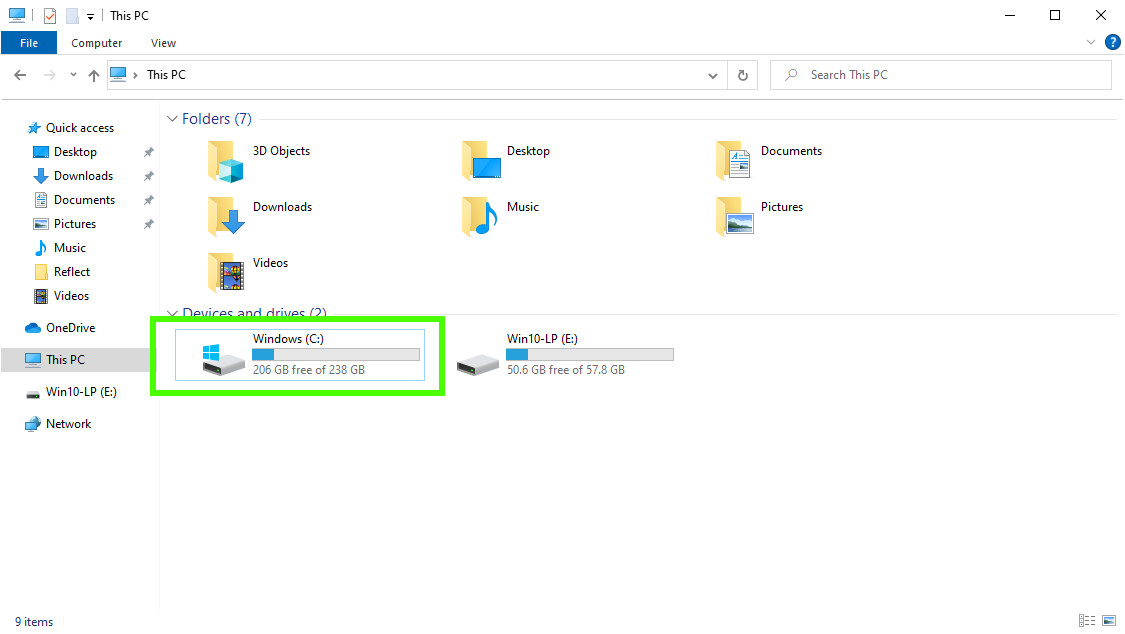How To Clone Your SSD or Hard Drive
Even the best SSDs are dirt cheap these days, so it’s very tempting to upgrade your gear. However, migrating from one drive to another can be a hassle. You have the operating system, your apps, all your settings and your data. Rebooting from a fresh Windows (or Linux) install would take forever, and you’d probably spend weeks trying to find things you forgot to add back. The answer: clone your SSD.
Cloning a drive is a quick and easy way to move your installation from an older, slower drive to a faster, larger one. There are many ways to achieve this, and Clonezilla is among the best. This live Linux distro boots from a USB stick or CD/DVD and uses a wizard-based system to easily migrate between drives, image installations, and even deploy operating systems to multiple computers over a network connection. Clonezilla simply works whether you are cloning a Windows operating system or a Linux distribution.
Connecting your new drive to PC for cloning
If you want to move the contents of your PC’s boot drive to a new, faster, or larger alternative, you need a way to connect both drives to the computer at the same time. If you have a desktop with room for it, you can connect the new drive to its M.2 or SATA connector and mount it in your case.
However, if you’re using a laptop or don’t have the space to have both drives in your computer at the same time, you’ll need some sort of enclosure that allows you to plug the new drive into a USB port. If the new drive is a 2.5″ SATA drive, go for a SATA to USB 3.0 enclosure (opens in new tab). If it’s an M.2 NVMe or SATA drive, go for an M.2 to USB enclosure (opens in new tab).
If you are using an enclosure, you will need to open your PC when the cloning is complete and swap the old drive for the new one. If you’re planning on selling or giving away that old drive, check out our tutorial on how to securely erase an SSD or HDD.
Cloning Windows (or any other operating system)
For the purposes of our screenshots and steps below, we are migrating a Windows 10 installation from a 64GB eMMC drive to a 256GB NVMe drive. However, the process we followed can be applied to other scenarios such as: B. migrating installations from older drives to SSD or cloning a drive as a backup.
Creating a Clonezilla Boot USB
Creating a Clonezilla bootable USB is a great first step in your tech toolbox. With Clonezilla you have the tools to backup and migrate entire systems. For this part of the project you will need a 4GB USB stick.
1. Go to Clonezilla download page and select the current stable version. At the time of writing this was a Debian based release.

2. Select the CPU architecture and Set the file type to ISO and then click Download. USB drives require ZIP file type, CD/DVD users must select ISO before downloading.

3. Download and install Rufus for your operating system.
4. Insert a USB drive into your device and Open Rufus.
5. Make sure your USB drive is selected, then click SELECT and use the Clonezilla ISO image.
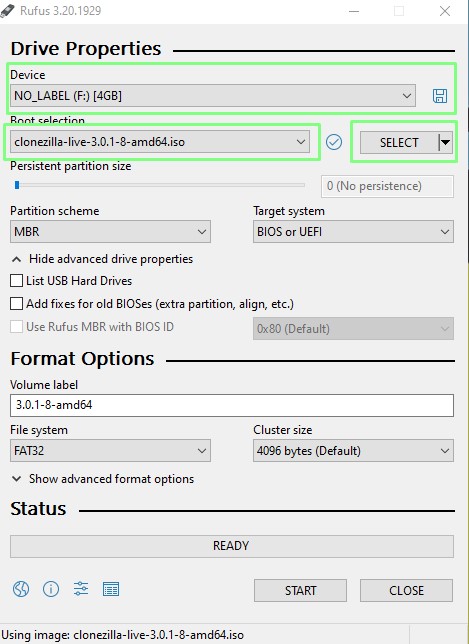
6. Click Start to begin writing Clonezilla to the USB drive.
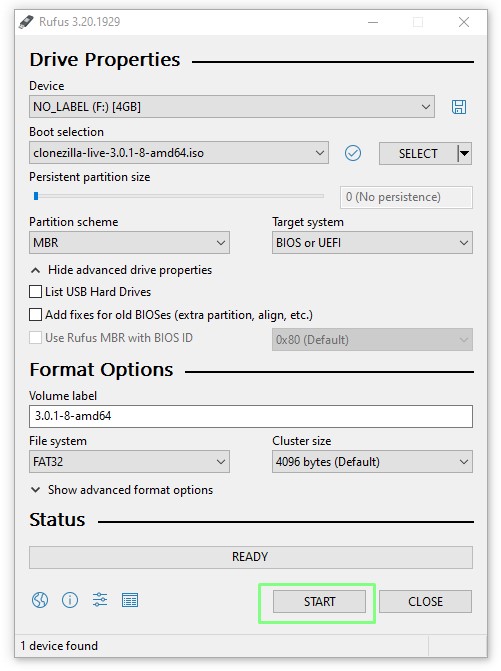
4. Write the image in ISO mode and click OK to start the process.
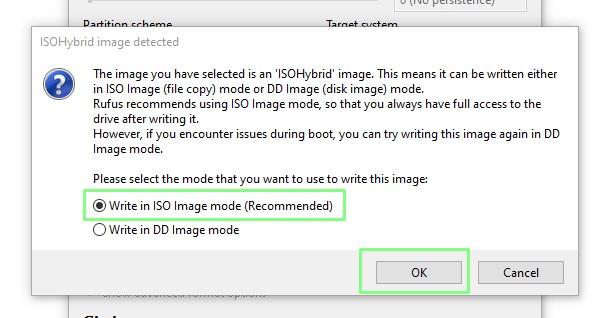
Boot Clonezilla
With our test computer running Windows 10 from an embedded 64GB eMMC drive and a blank NVMe drive inserted into the computer, we’re ready to migrate the installation.
1. Boot from Clonezilla USB drive. The key to entering the BIOS is slightly different for each machine, but here we have a list that will steer you in the right direction.
2. Select Clonezilla live from the menu and press Enter.
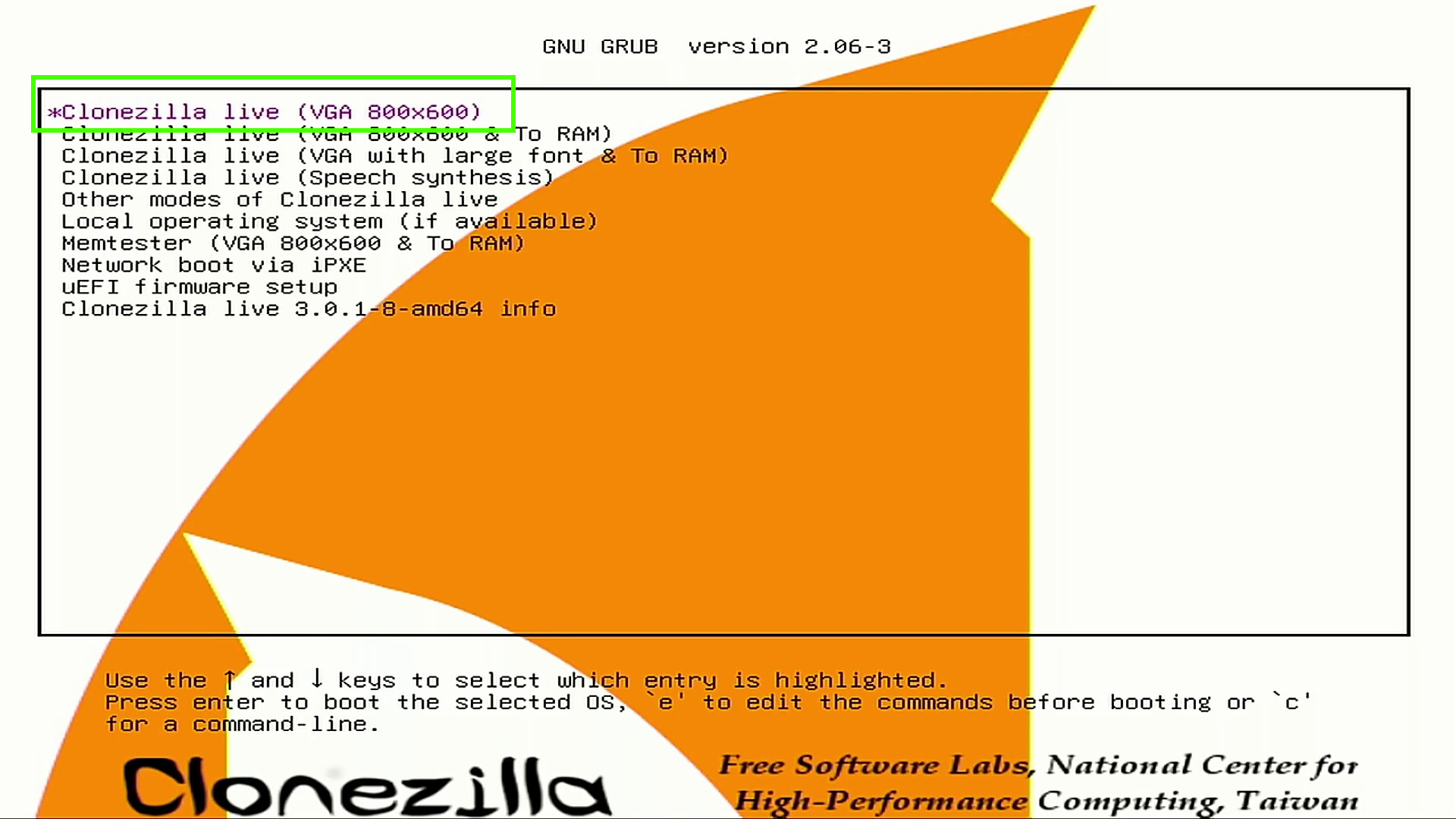
3. Select your desired language and press Enter.
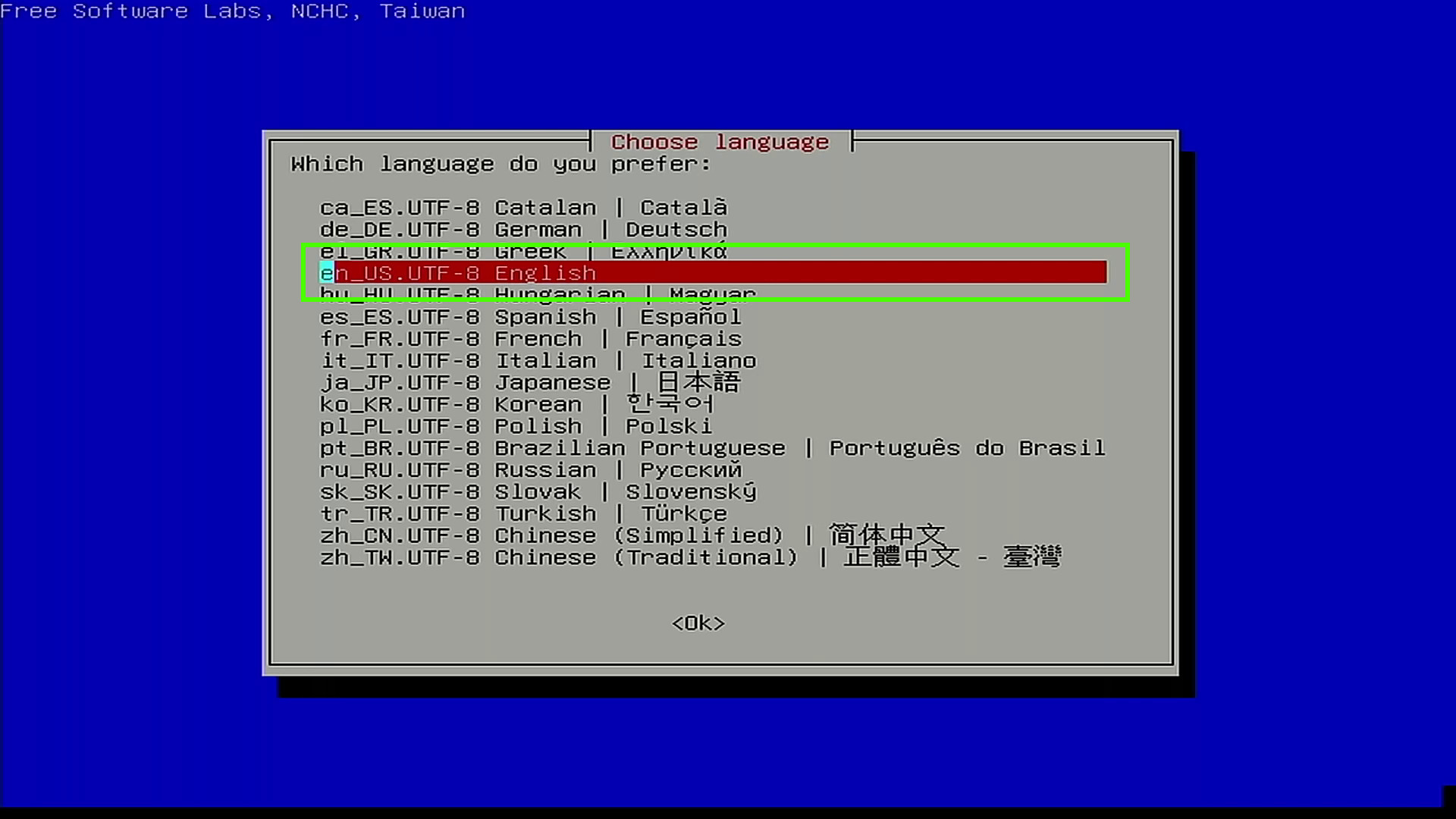
4. Confirm the selection with Enter.
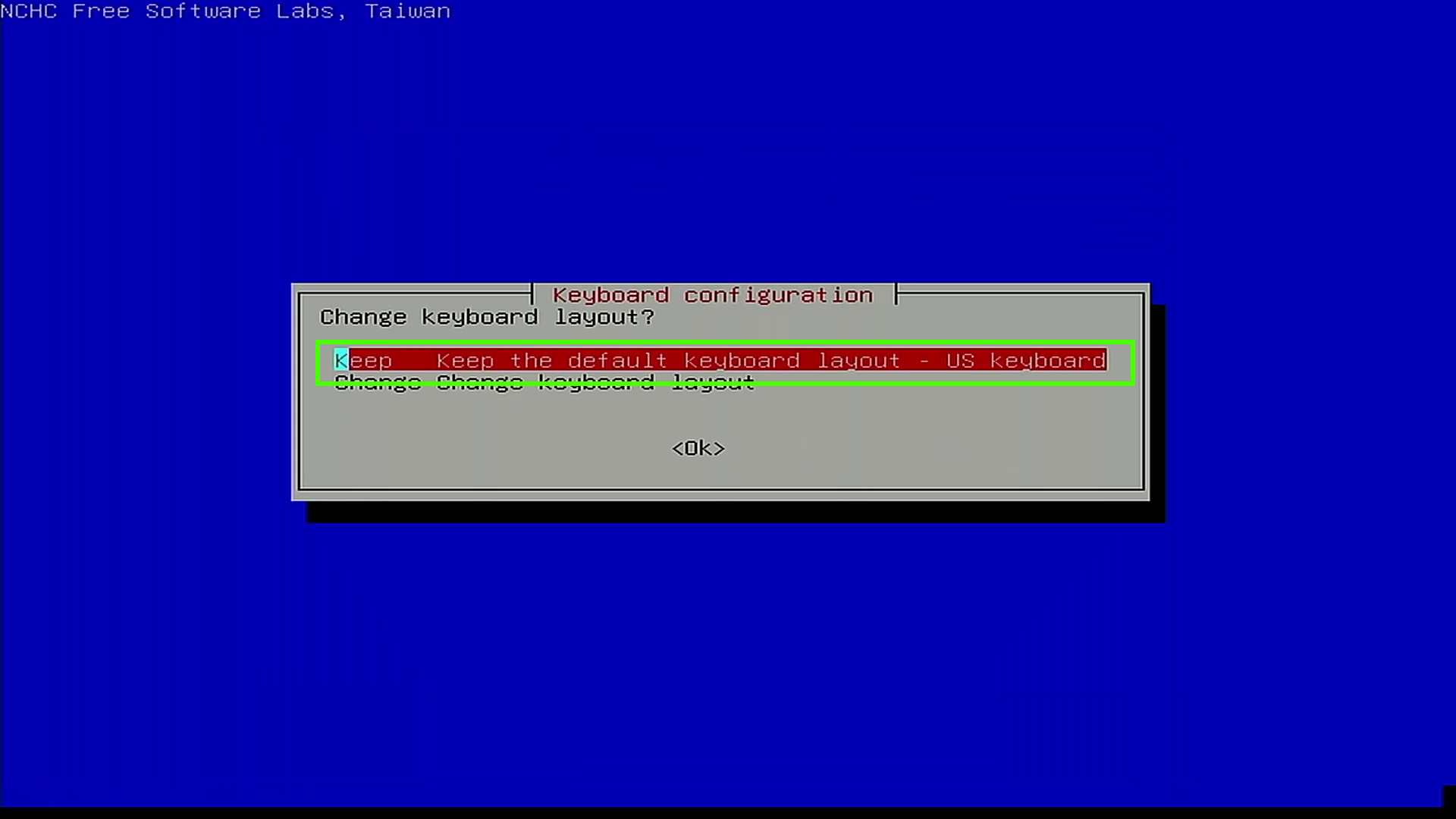
5. Press Enter to start Clonezilla’s wizard.
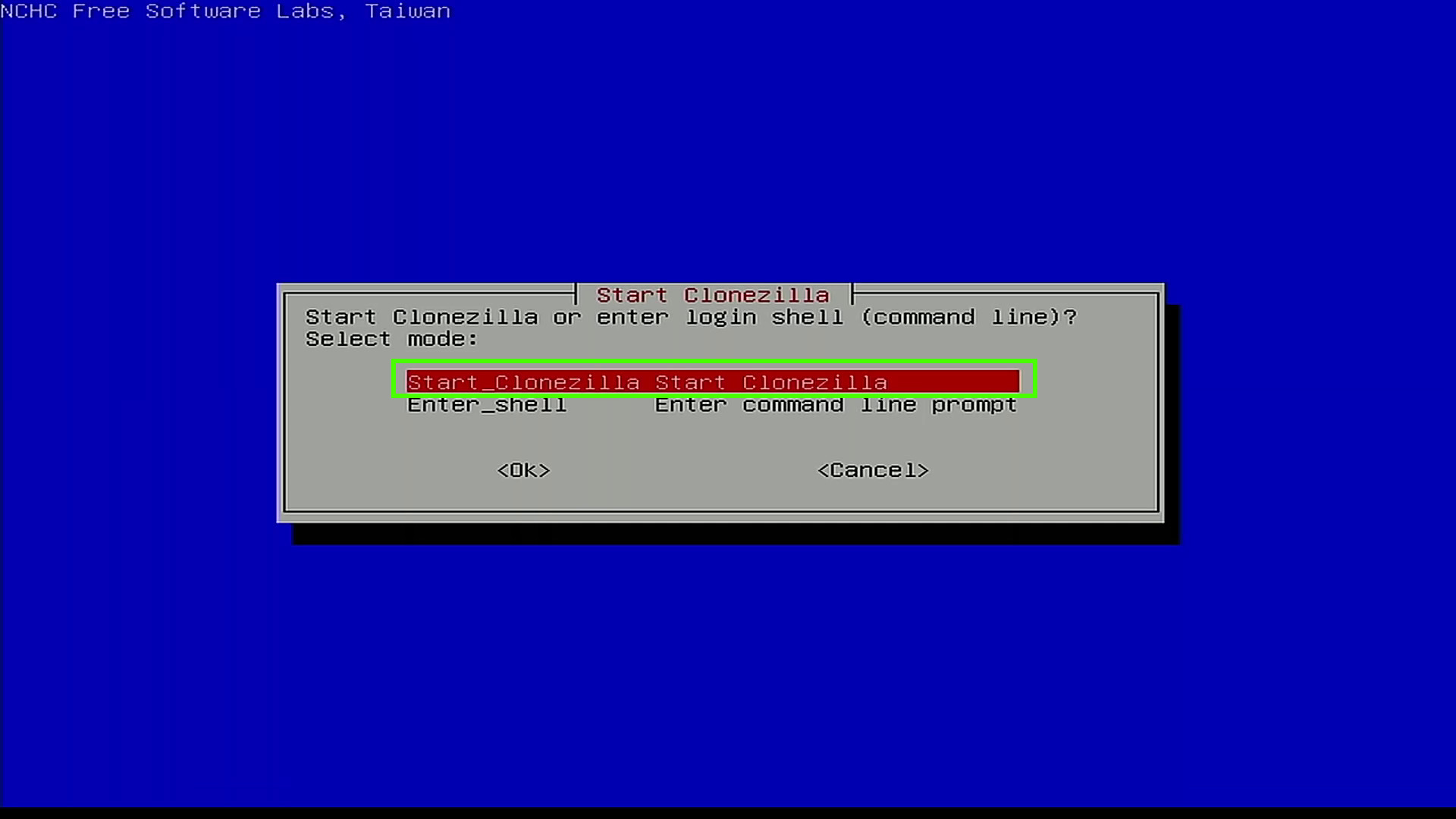
6. Select device-to-device to clone one drive to the other and press Enter. The other options are Device Image, which clones a drive to a backup image. Remote source and destination for remote cloning tasks. Servers can be used to clone devices to a remote server or to deploy a clone image to multiple devices at the same time.
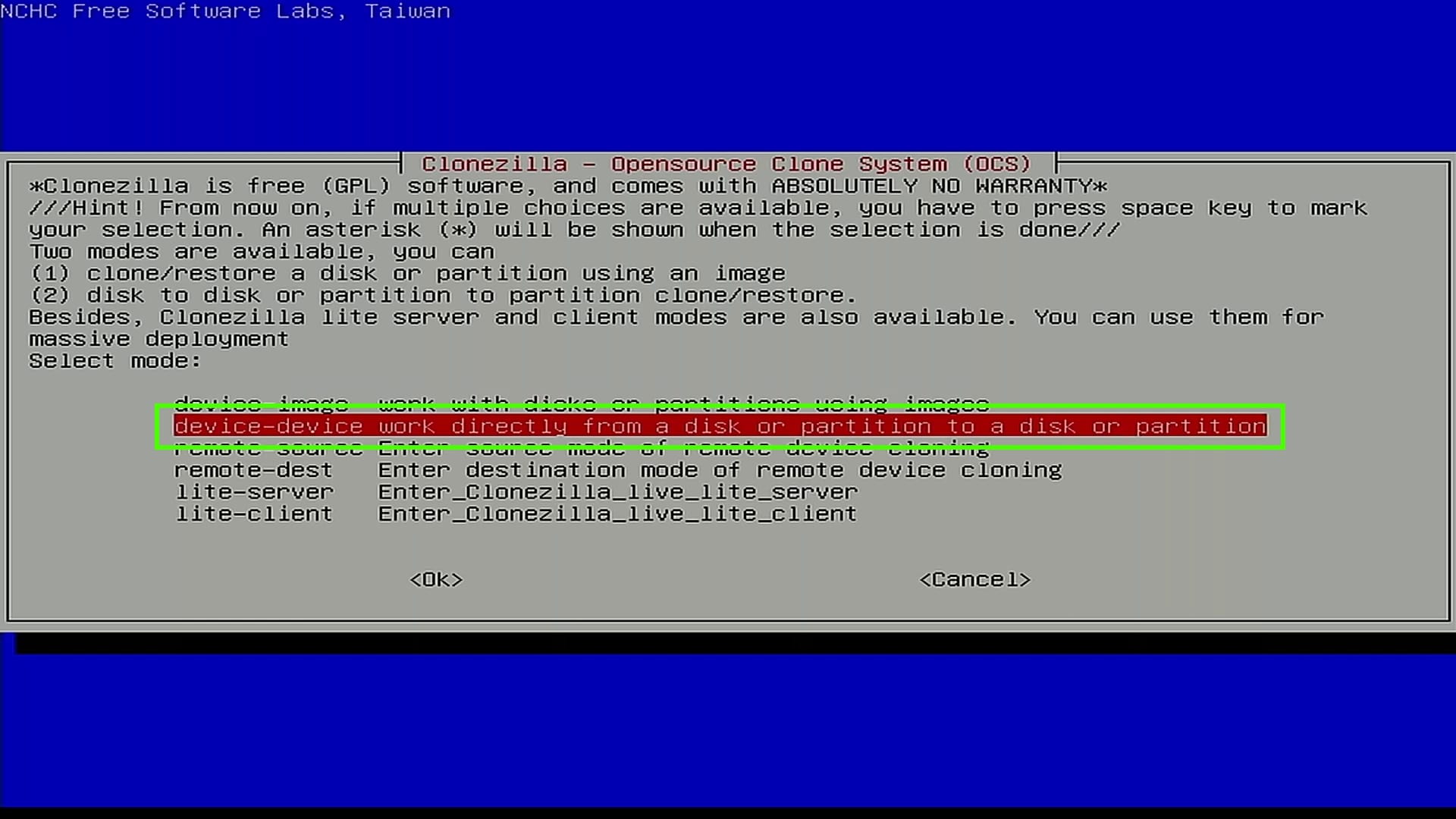
7. Select Expert and press Enter.
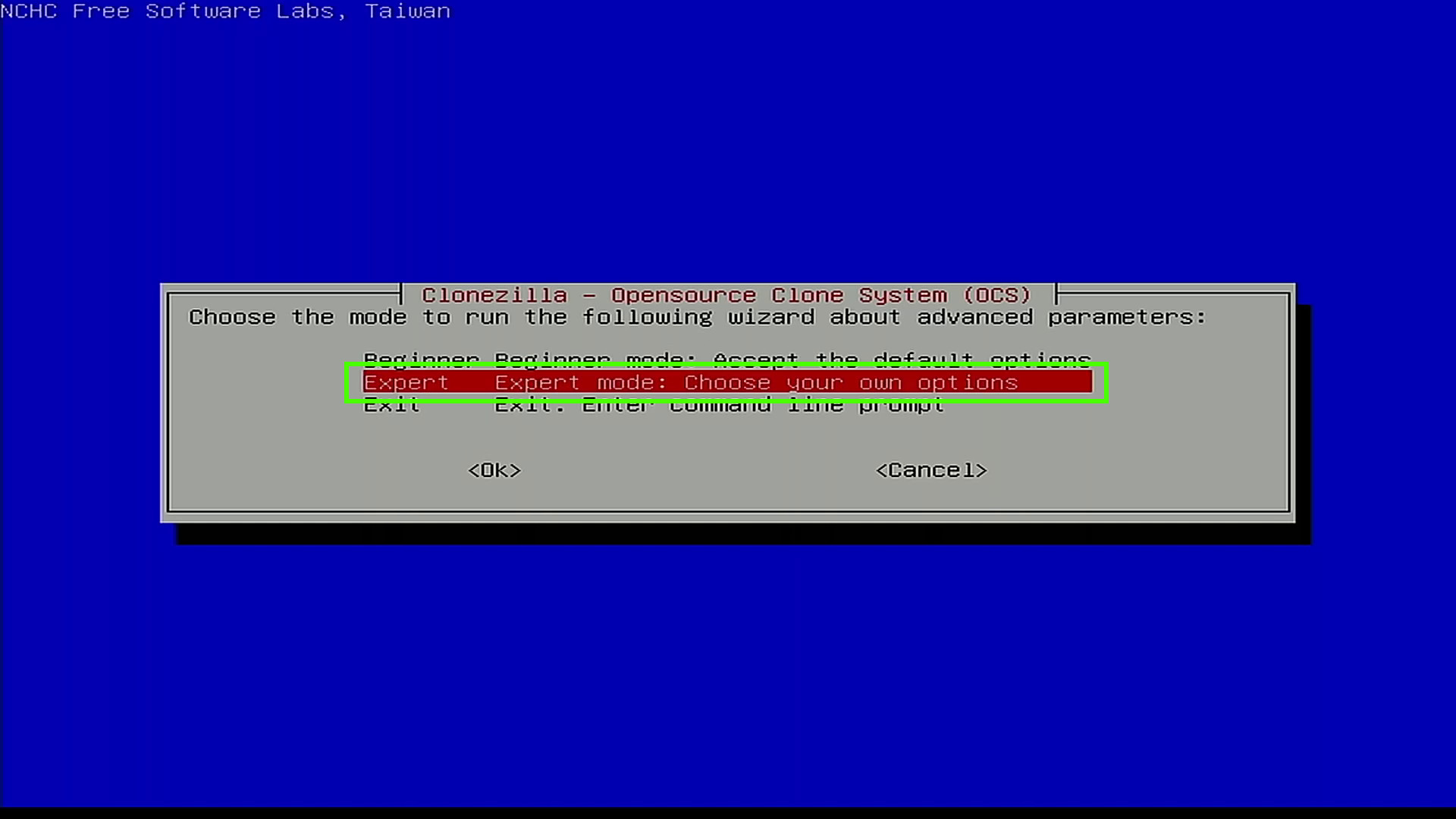
8. Select the disk_to_local_disk clone option and press Enter.
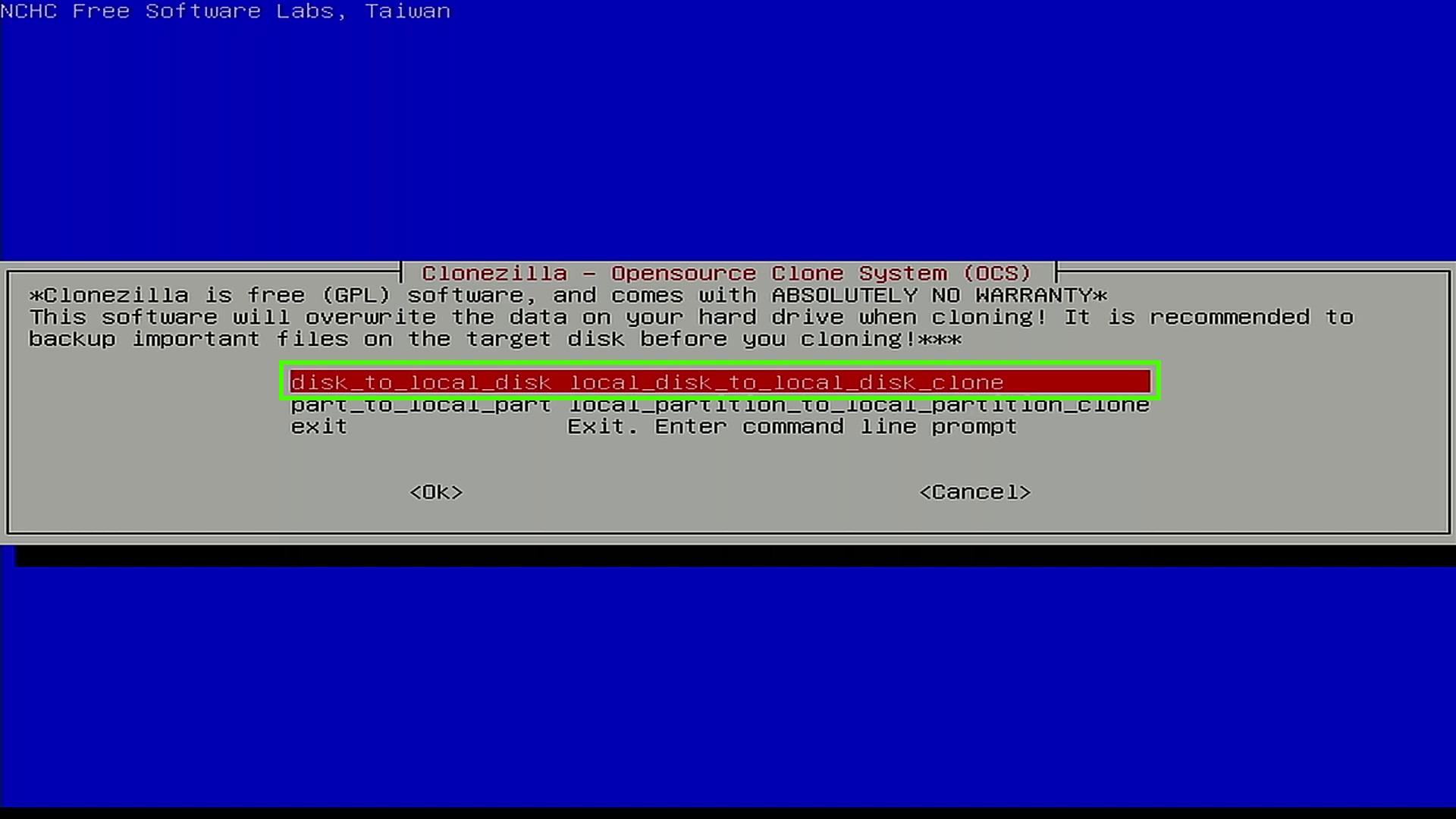
9. Select the source (the drive you want to clone) and press Enter.
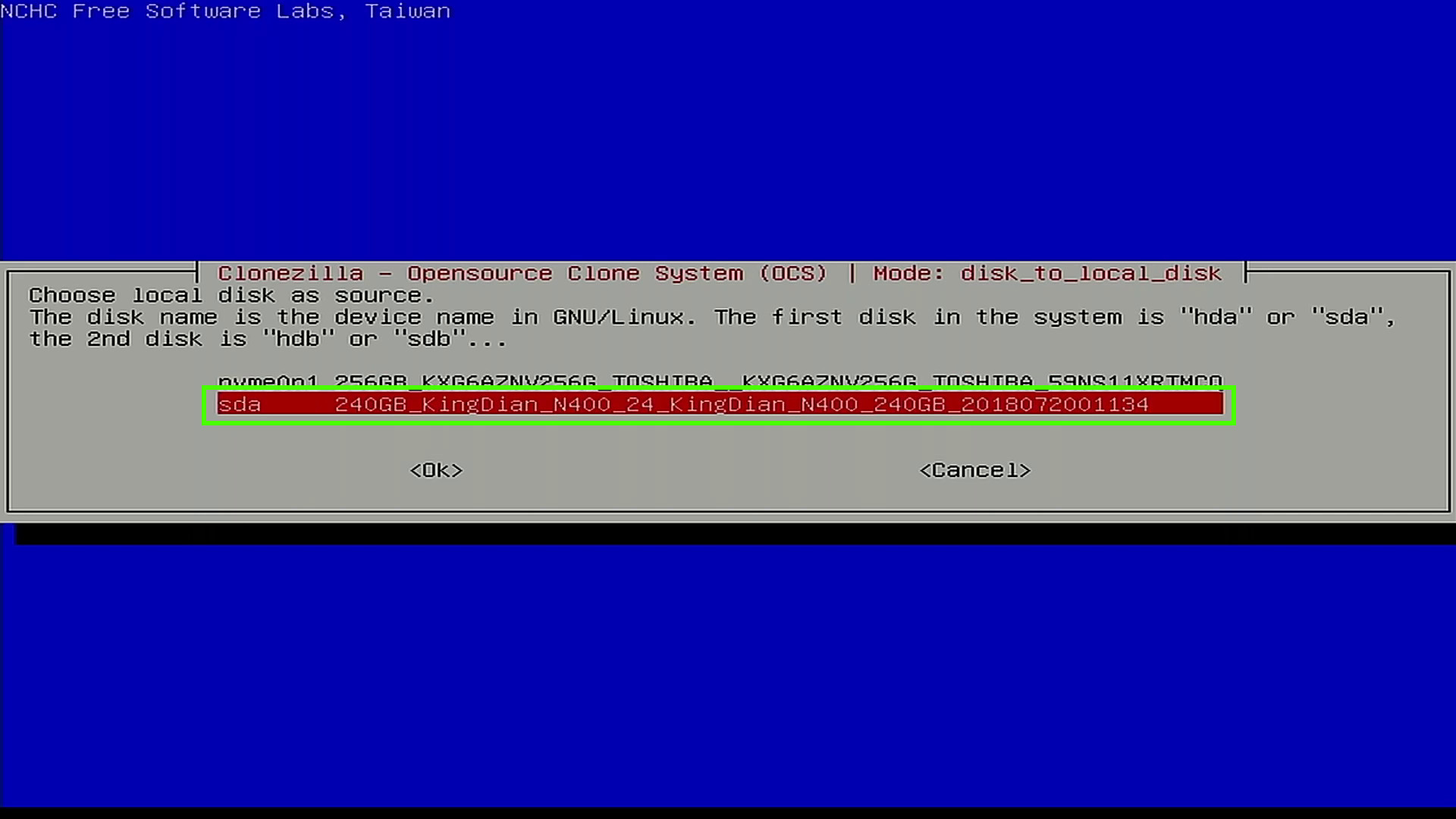
10. Select the target to clone the source to and press Enter. In our example it is a 256 GB NVMe drive.

11. Scroll down to T1 and press spacebar to select and then enter to continue. This option ensures that our Windows bootloader is successfully copied to the target drive.
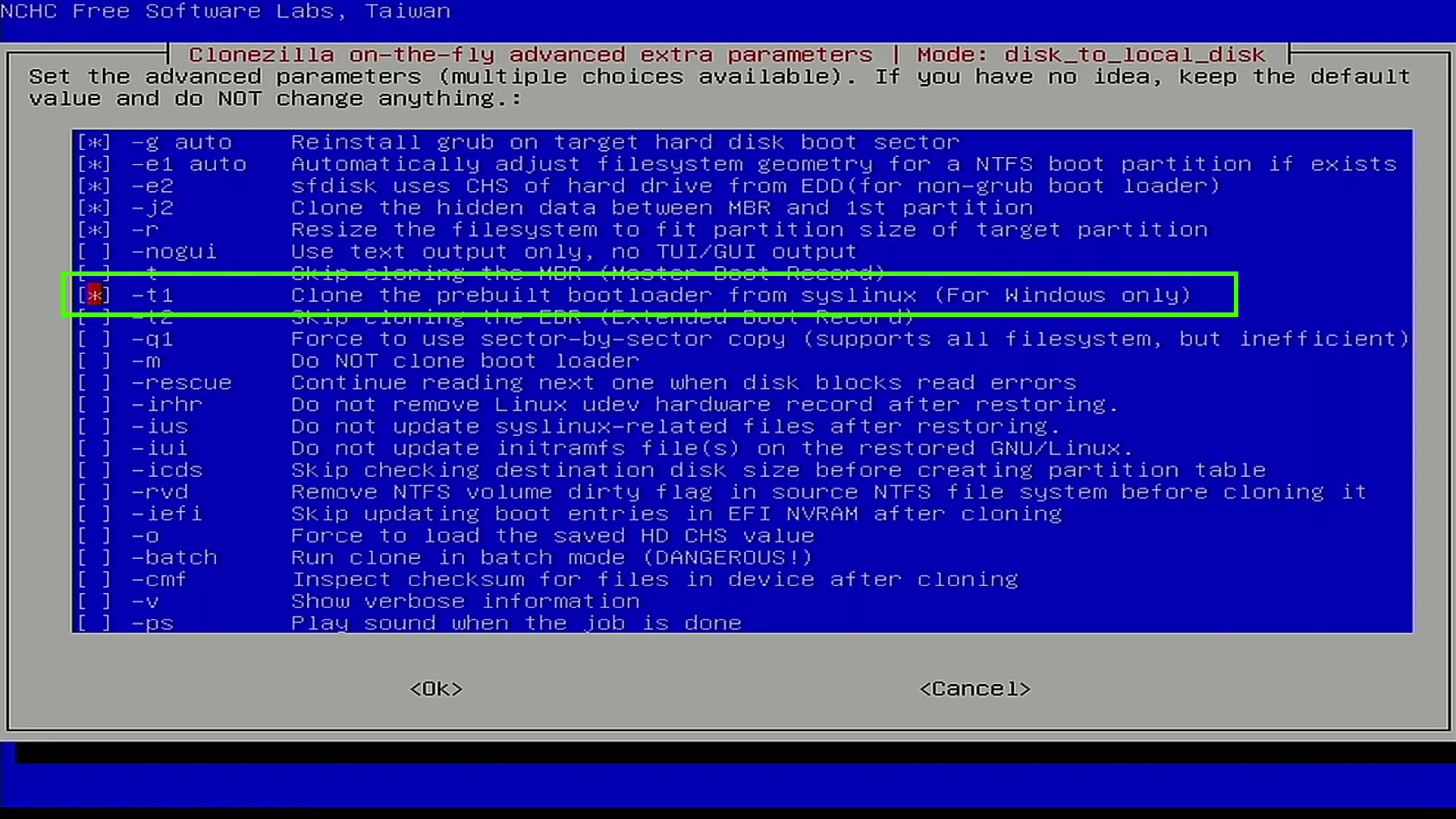
12. Accept the default option to skip the file system check and press Enter. You can choose to scan the file system for problems if you want, but this adds some time to the process.
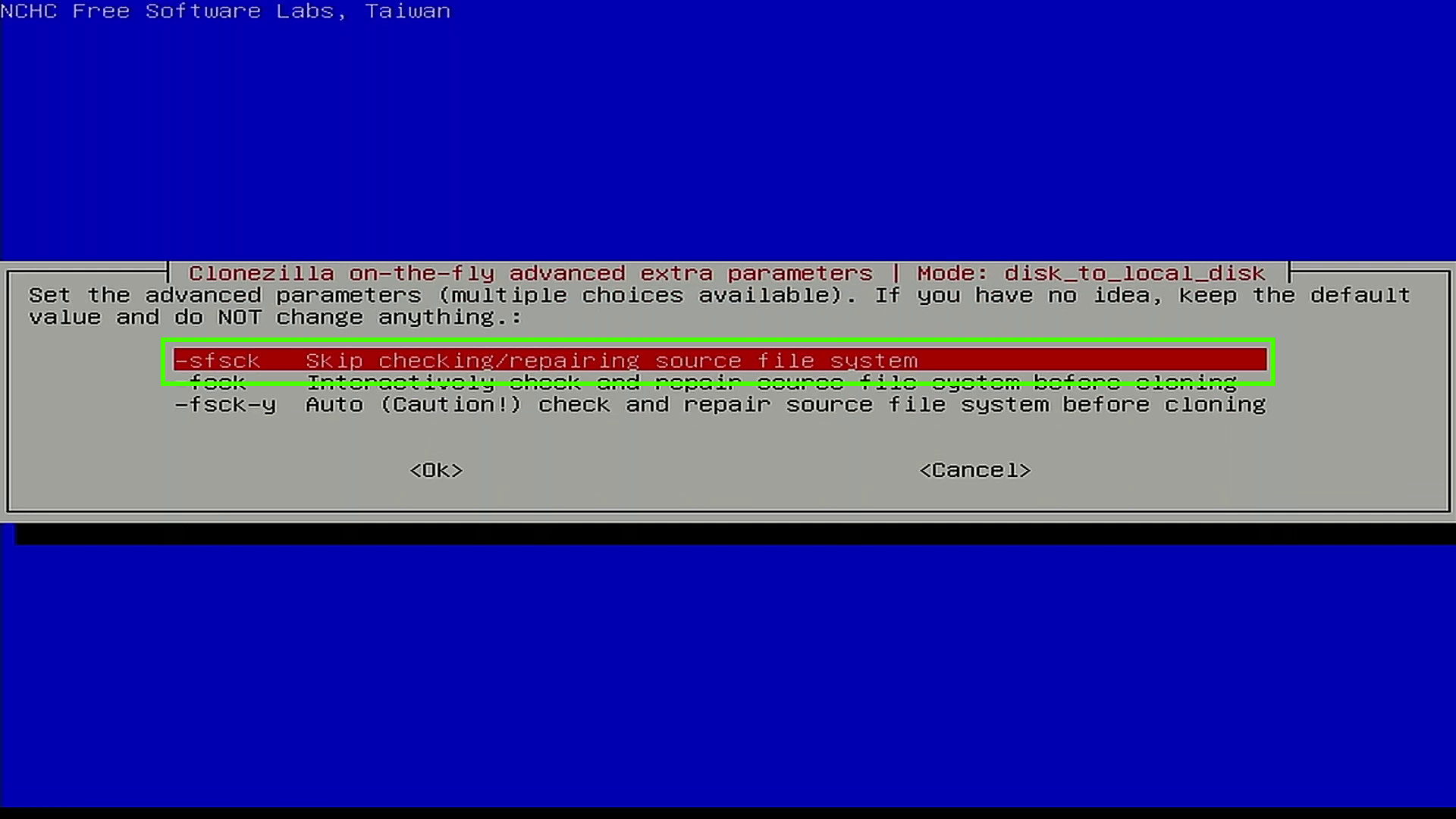
13. Accept the default option to use the existing partition table and press Enter.

14. Choose Select and press Enter. When Clonezilla finishes, we will be asked to restart or shut down the computer.
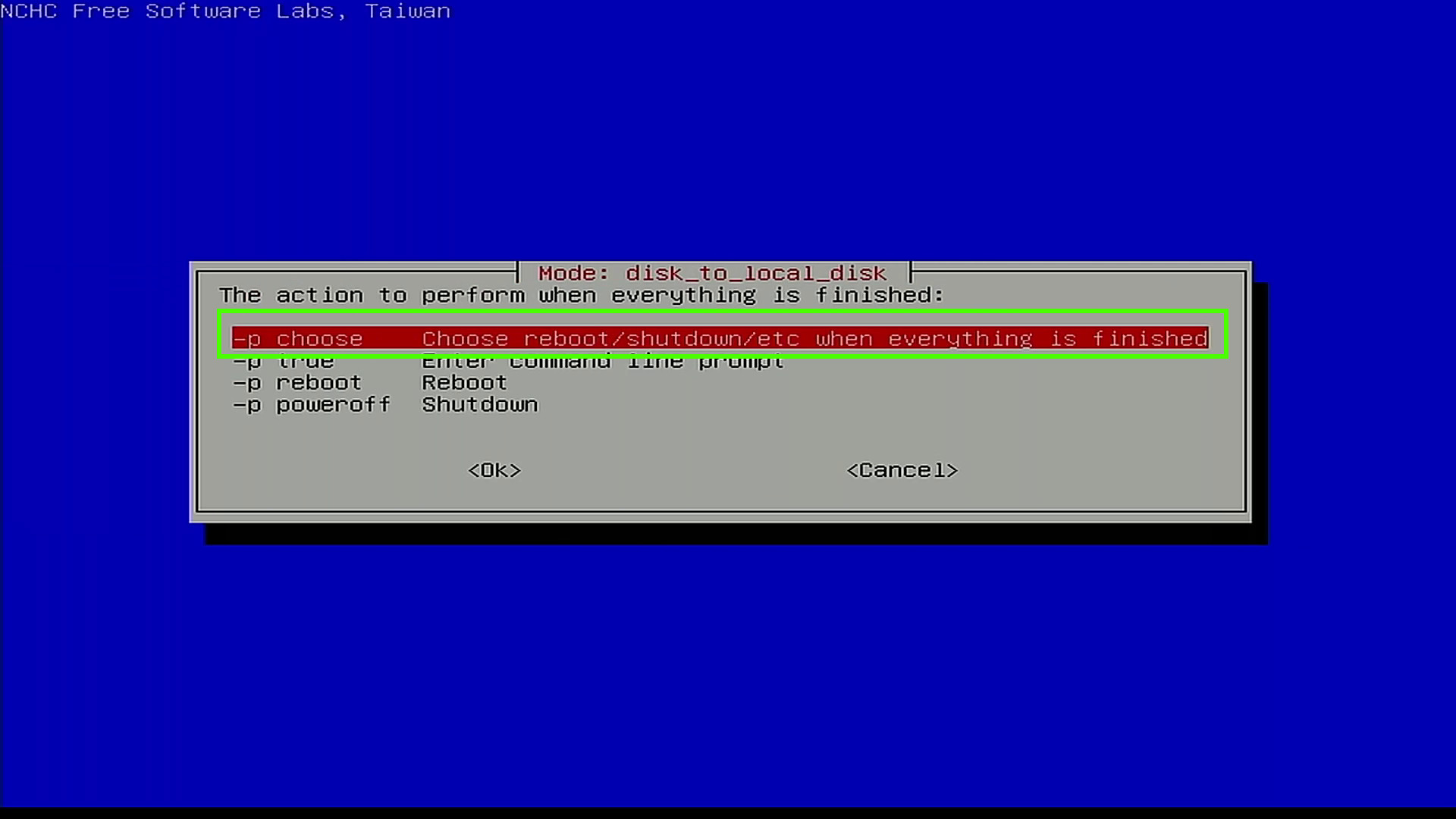
15. Press Enter to start the process. Clonezilla provides us with a terminal command that encapsulates all the options we just selected. If we want to run the process from a terminal, this command can be used.
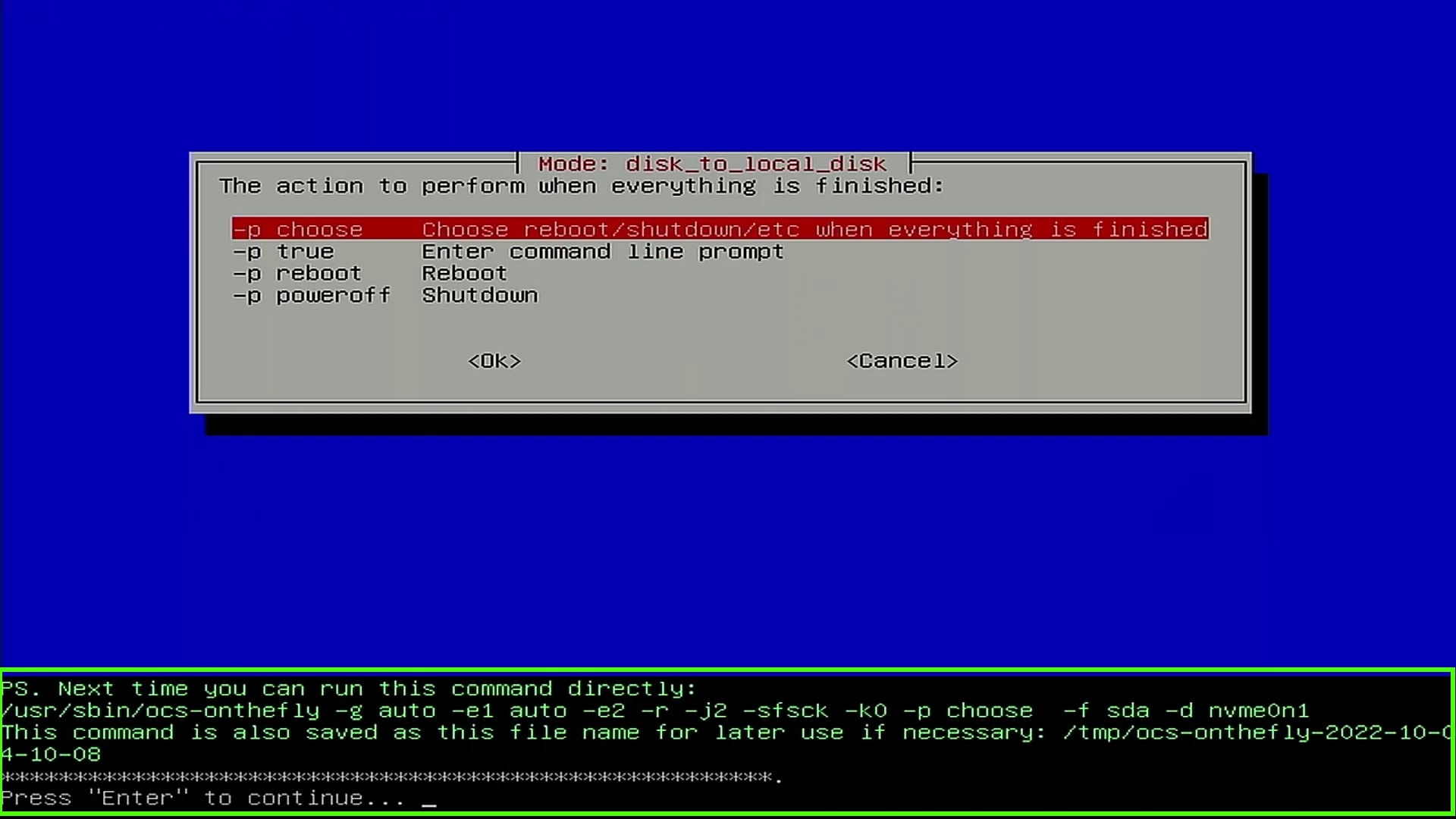
16. Press Y and Enter to start the process. Make sure everything is correct before proceeding, there is no going back.

17. Wait for the cloning process to complete. Depending on the size and speed of your drives, this may take some time.

18. Press Enter to complete the process.
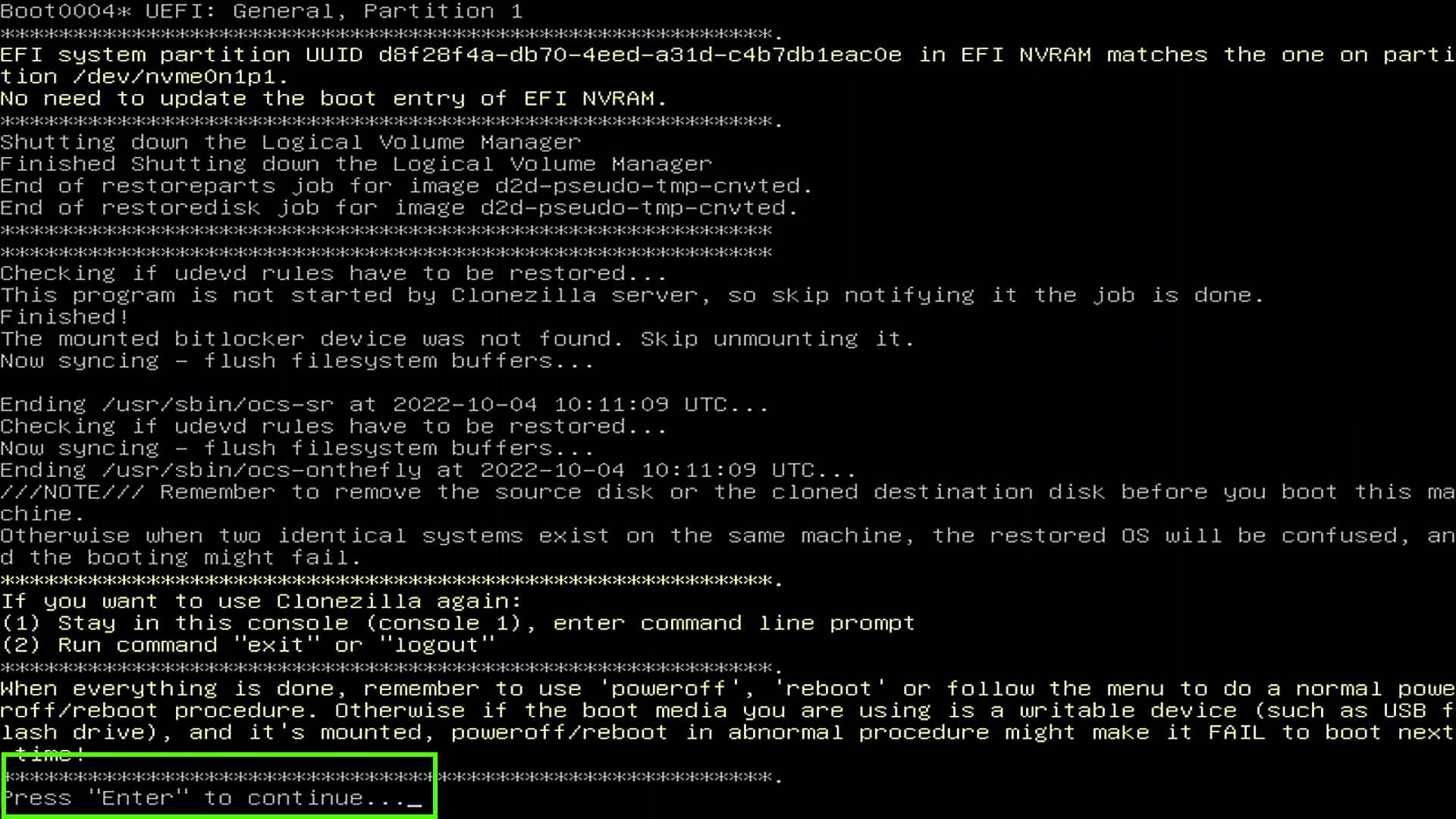
19. Select Power off and press Enter.
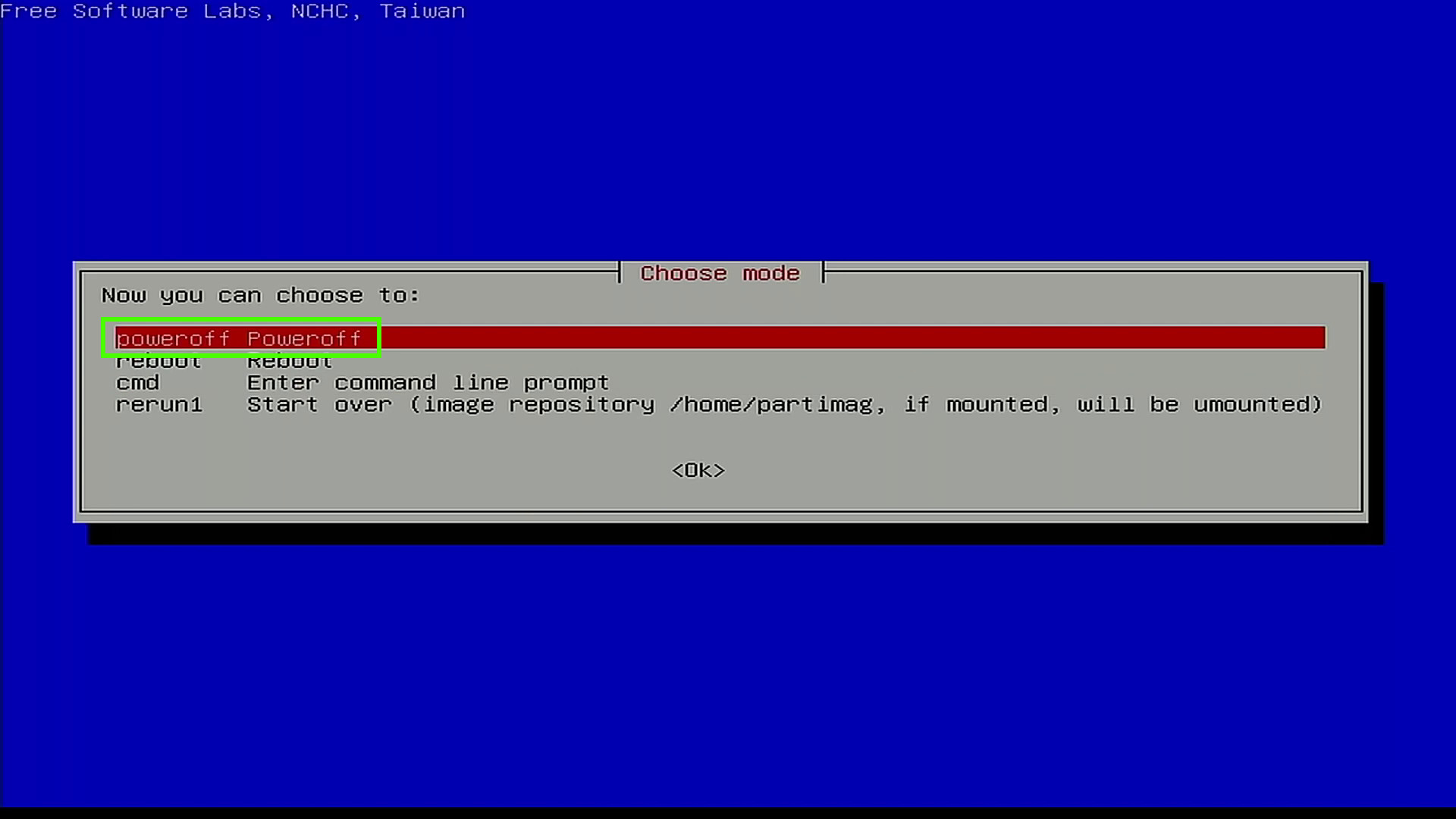
Extend your partition after cloning
The migration is complete and now we need to verify that our operating system boots and extend the partition to use all the space on the drive. We used Windows 10, but the steps should be the same in Windows 11.
1. Swap in the new drive if you don’t keep both drives in the same computer.
2. Turn on the computer and use the BIOS to set the new drive as the boot drive. Each device is different, please refer to the motherboard manual
3. boot up, in our case to Windows.
4. Open File Manager and click This PC. We need to extend the partition to use the full capacity of the NVMe drive.

5. Download and install MiniTool Partition Wizard Free
6. Open MiniTool and click on the recovery partition. We don’t need this partition and it prevents us from using the full capacity of the drive. You may not have this partition in the same place. If there is no partition between Windows installation and unallocated space, you can go to step
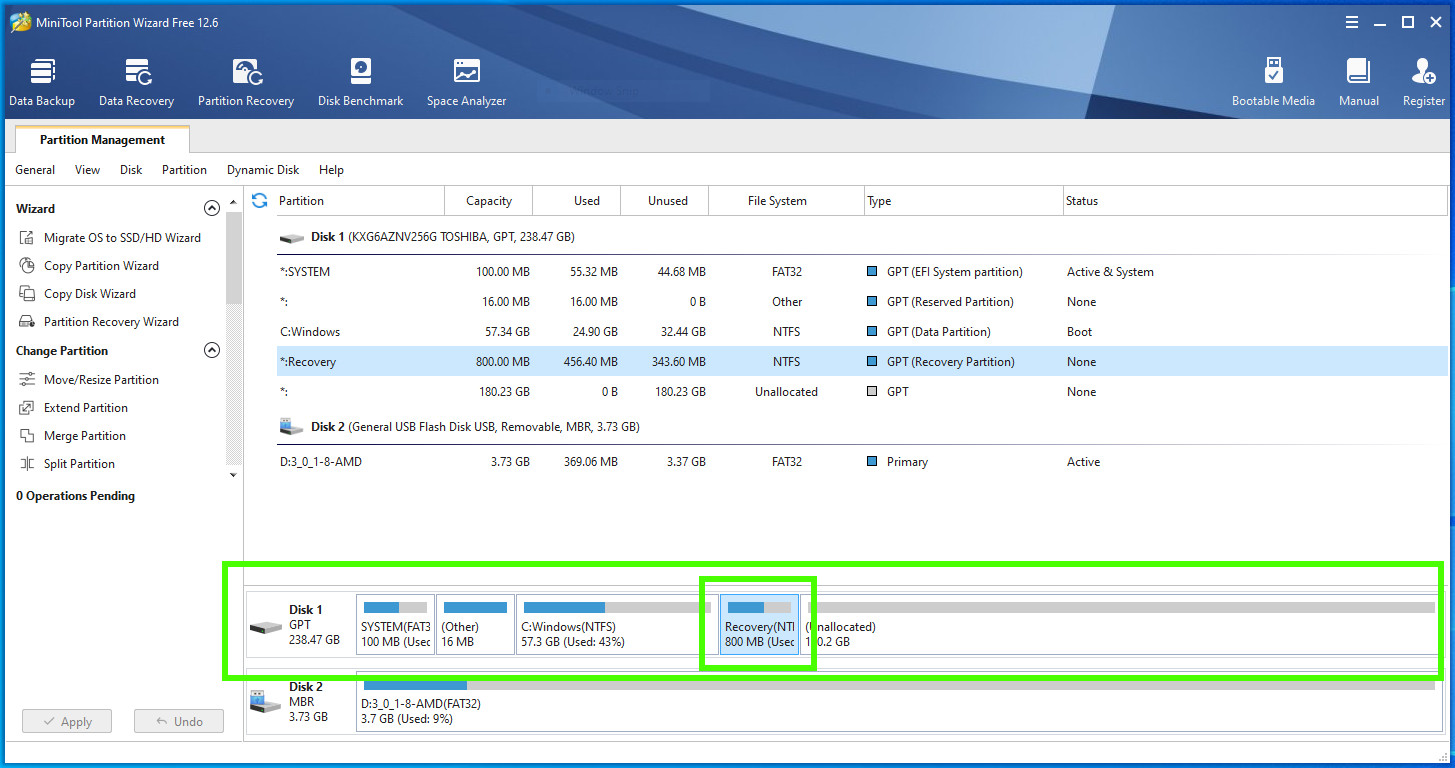
7. Right-click the partition and choose Delete.

8. Click Apply to delete the recovery partition.

9. Click on the Windows partition.

10. Right-click the partition and select Extend.
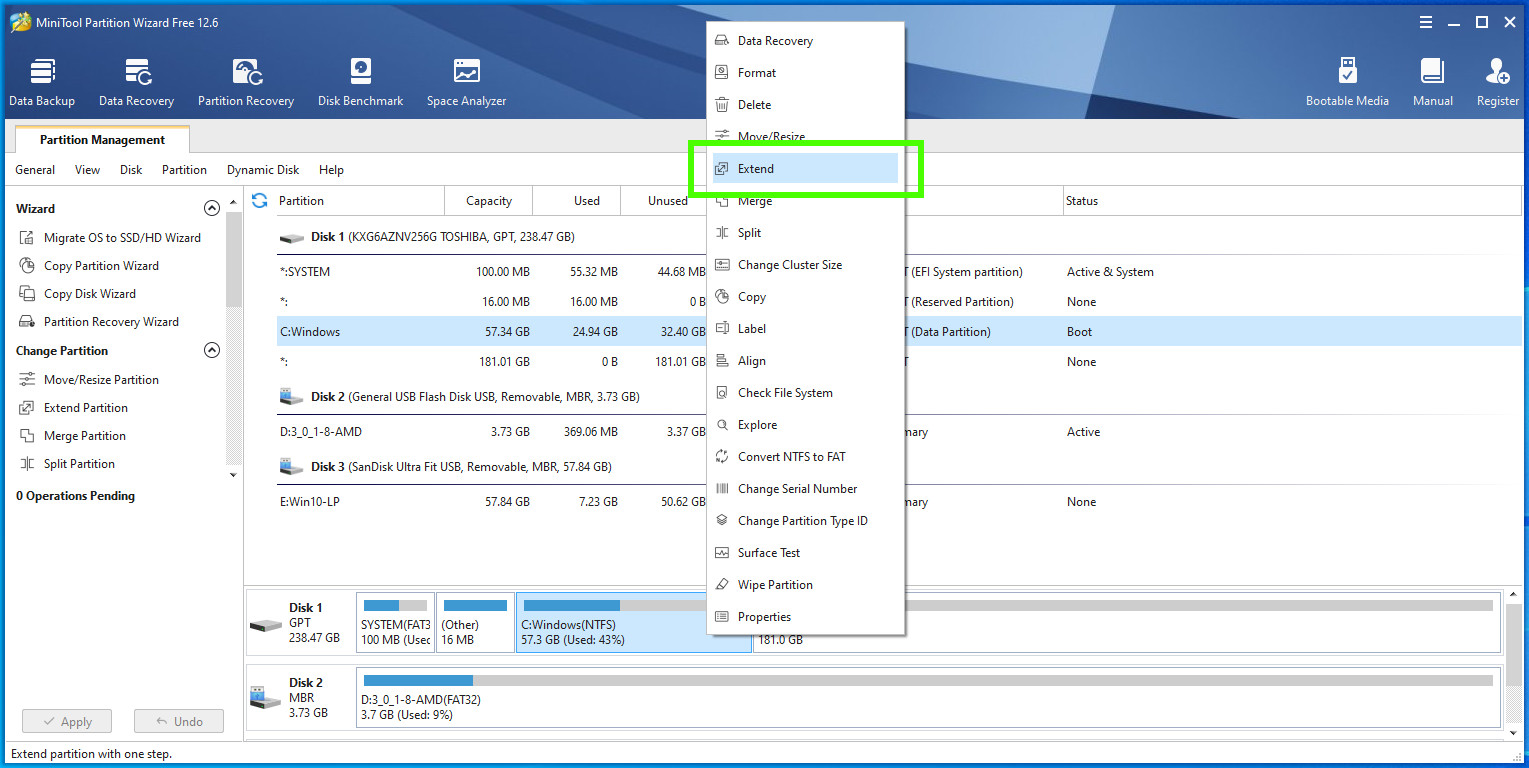
11. Select the unallocated space and then use the slider to choose how much space you need. click OK. We decided to use the maximum capacity of the drive.
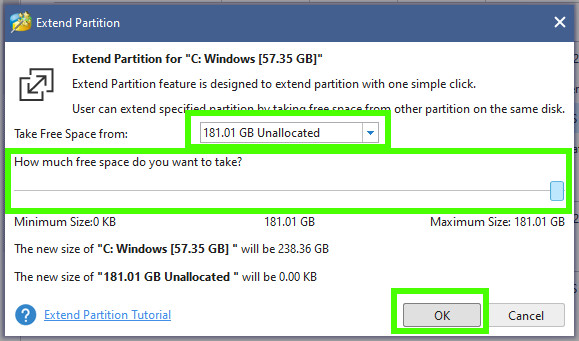
12. Click Apply to extend the partition.

13. Go back to File Manager, This PC to check if the drive capacity has now been increased.
